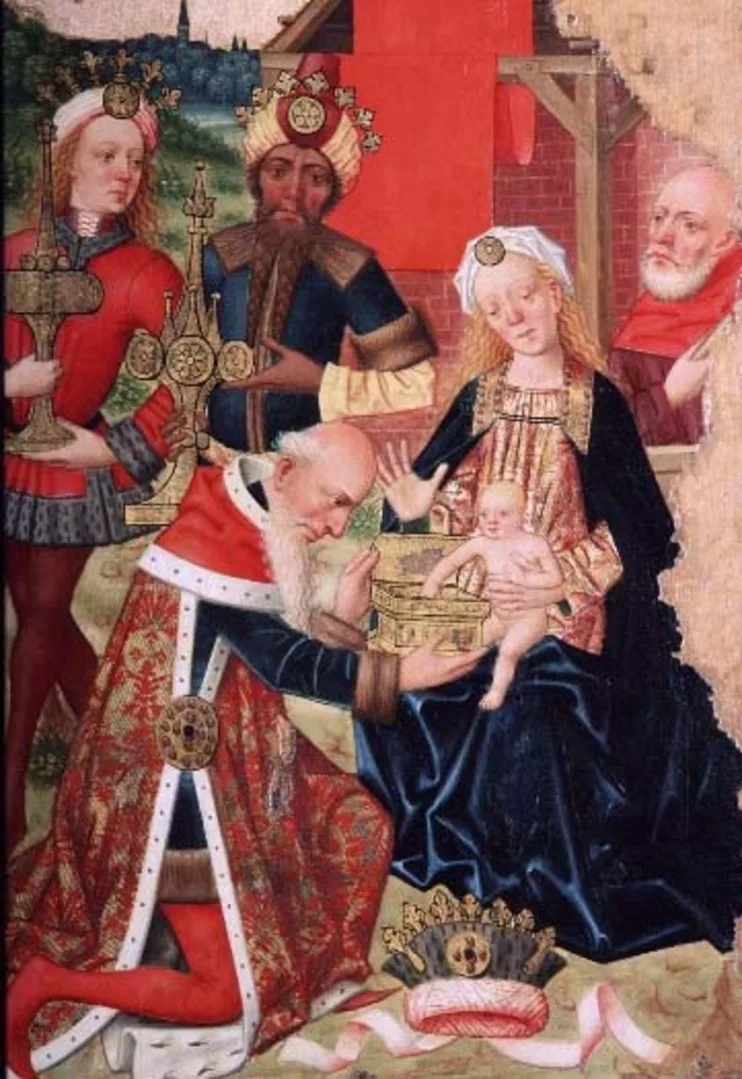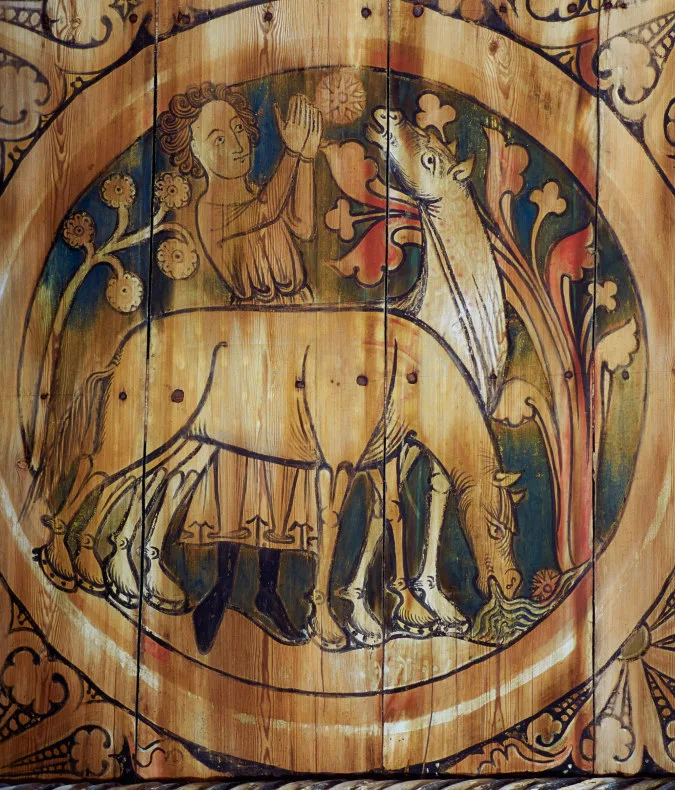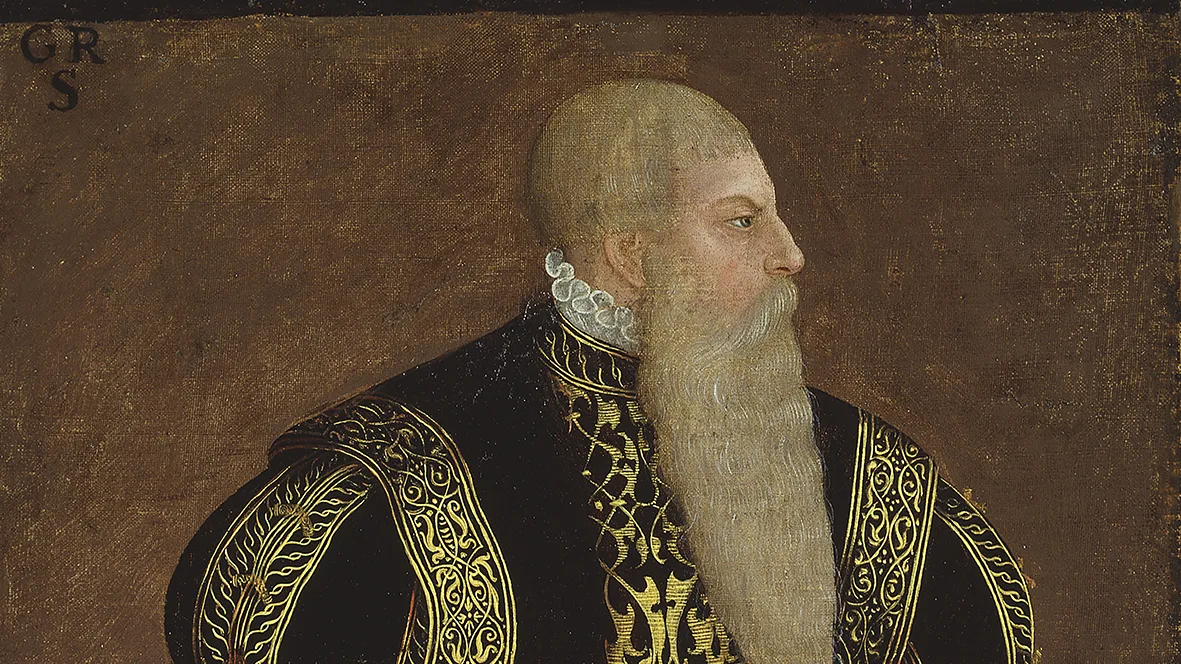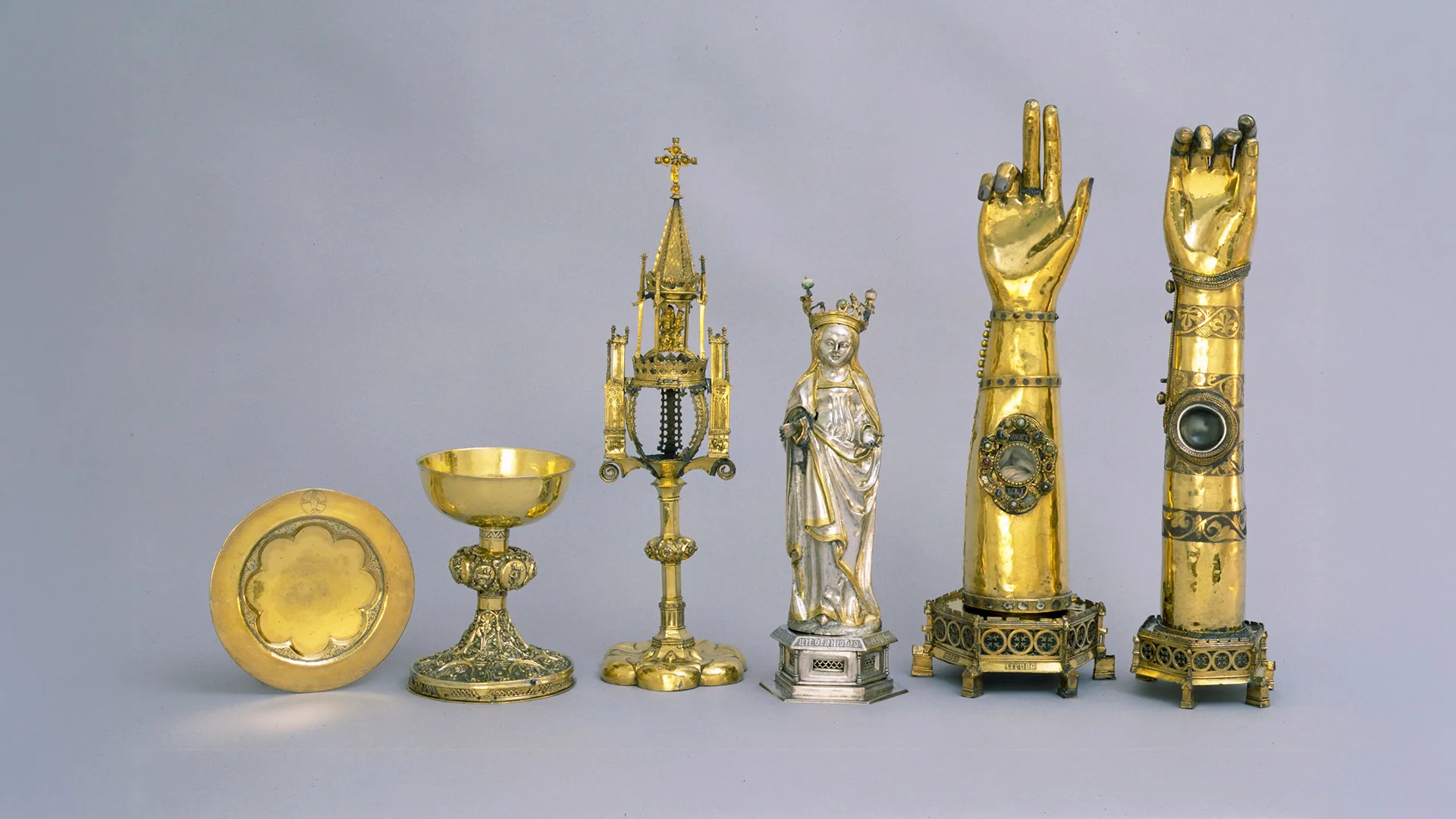New Year’s traditions
Viking Age
AD 800 – AD 1100
Middle Ages
AD 1050 – AD 1520
Modern Age
AD 1520 – AD 2025
In ancient folk belief, New Year’s Eve was thought to hold magical powers. People tried to predict the future by pouring molten lead or performing an årsgång—a ritual walk around several churches, interpreting what they saw or heard.
In medieval times, New Year’s Day was celebrated in honour of the Circumcision of Jesus, which, according to Jewish tradition, took place eight days after his birth. It was also the occasion for naming a male child.

The circumcision of Jesus
Detail from an altar in Österåker, Uppland.
On view at Historiska museet in the exhibition Medeltida konst
According to Bishop Brynolf’s statute from 1281 (Västergötland), anyone who worked on New Year’s Day, also known as the Eighth Day of Christmas, was fined “eight örtugar of the current coin” to the bishop. The same applied to Epiphany.
Modern New Year's traditions
Today, New Year’s Eve and New Year’s Day are public holidays. Since the late 20th century, New Year’s Eve is often celebrated in formal attire with lobster, champagne, or other festive foods. Fireworks are used worldwide. Originally, they were believed to ward off evil spirits before the new year. In rural Sweden, people would fire a shot in each direction to protect themselves.
New Year’s resolutions are a relatively recent tradition in Sweden. The term began appearing in the late 19th century, though the concept likely originated in the United States.







